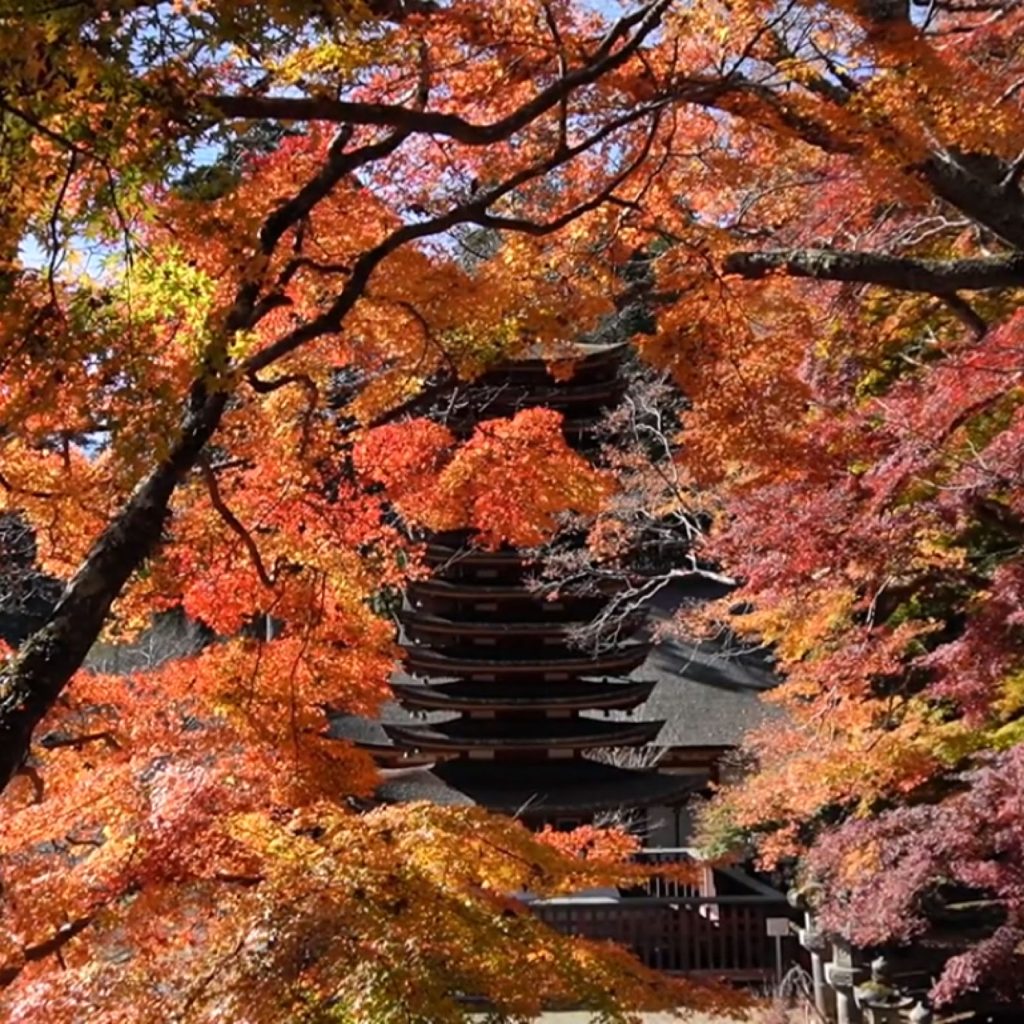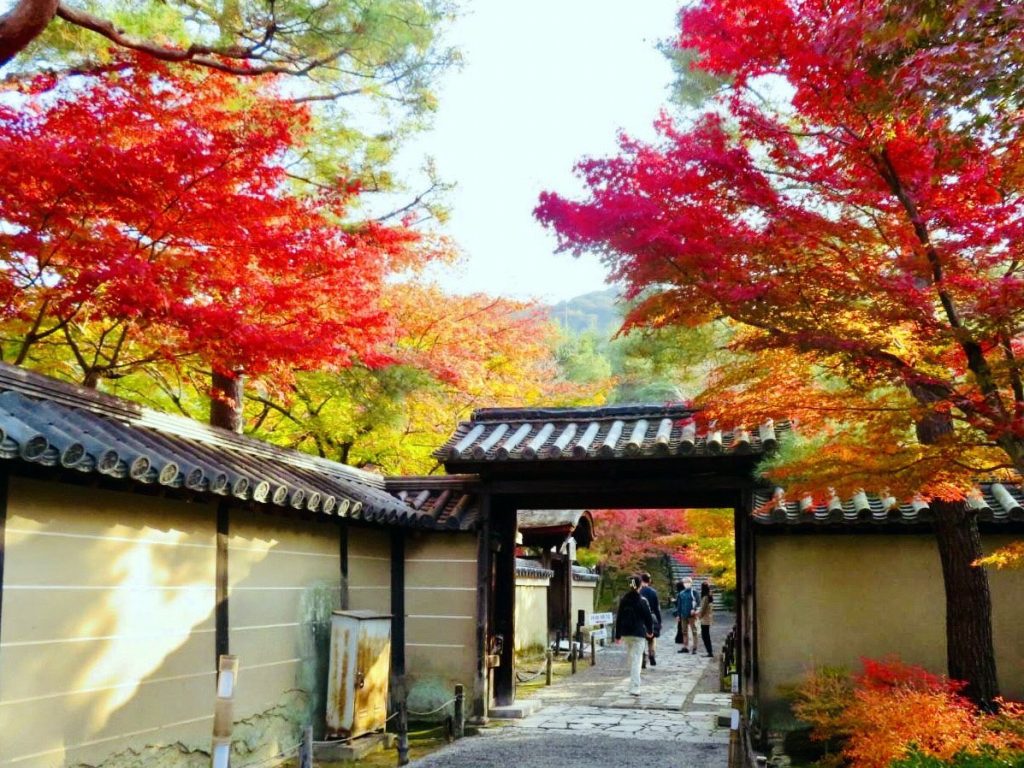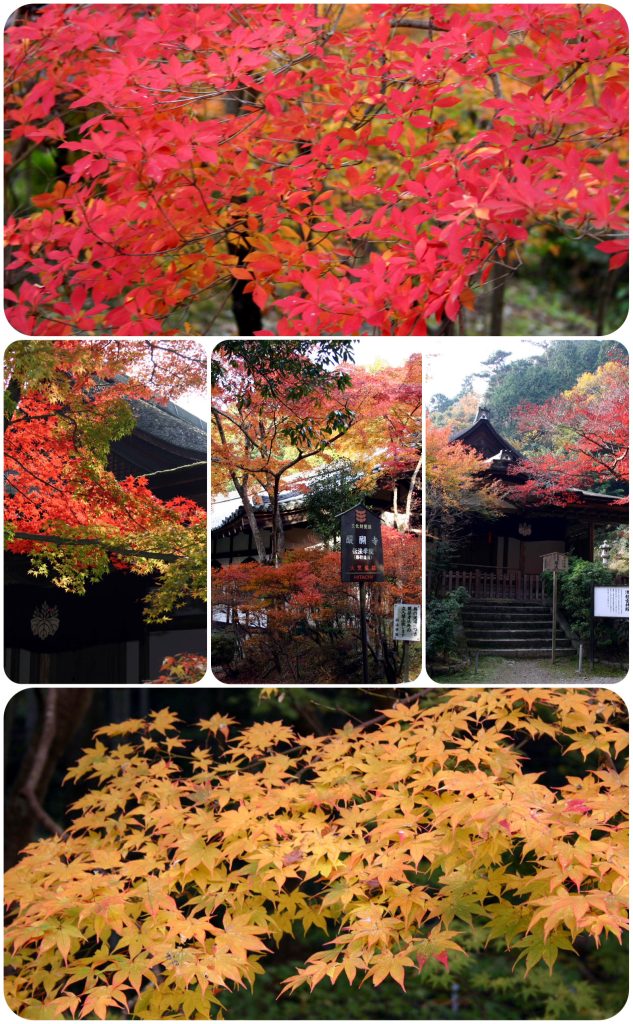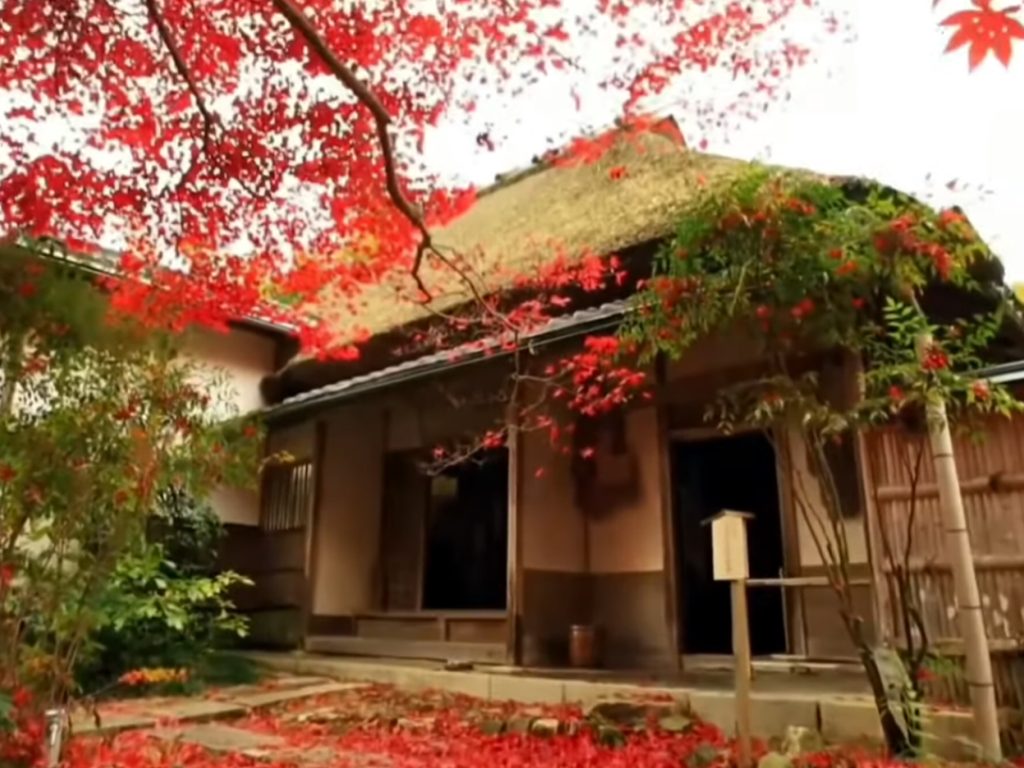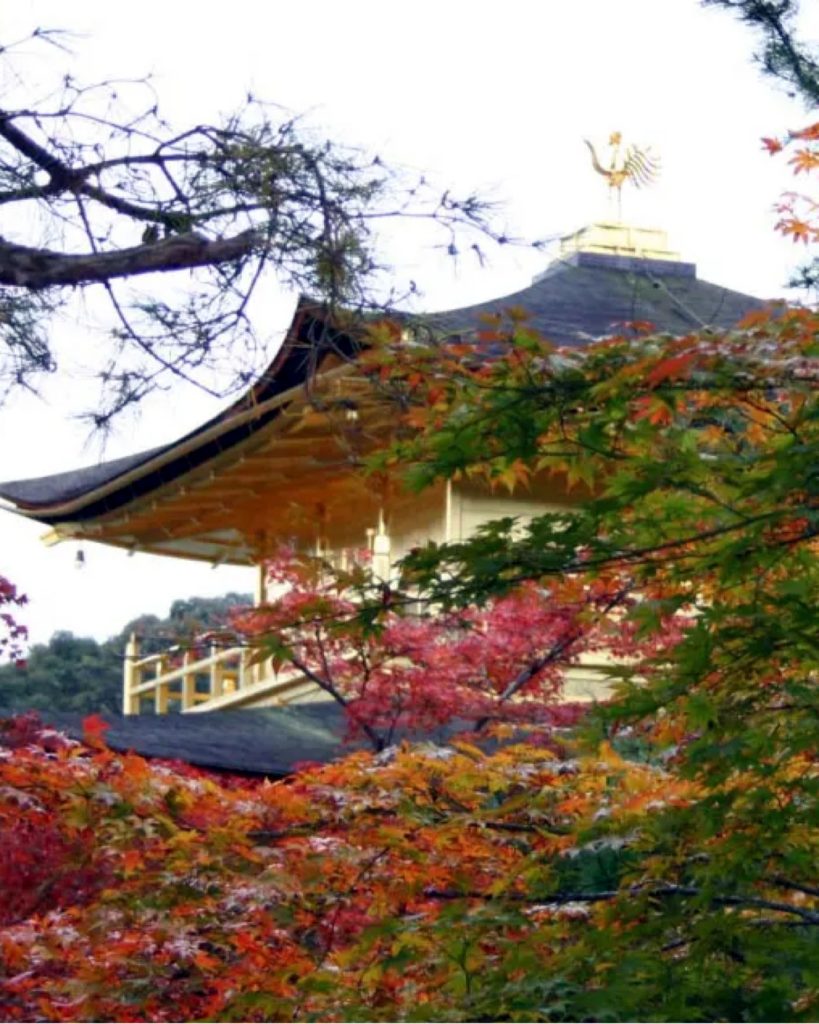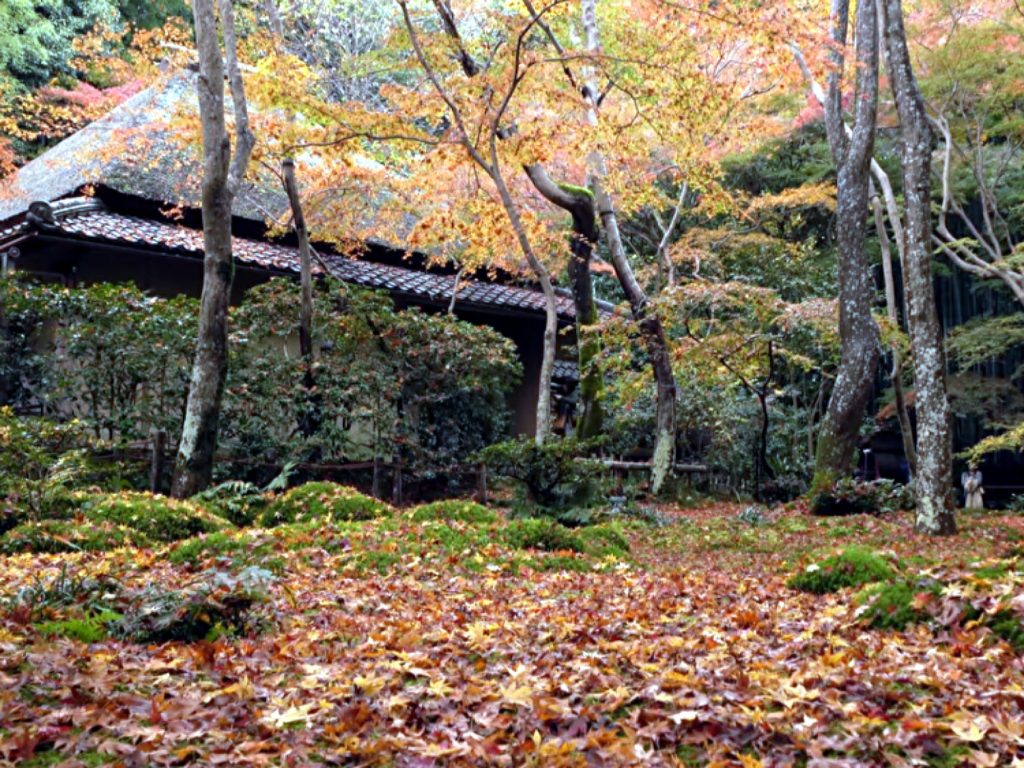
In the bamboo forest of Okusaga, a little further up the mountain from Arashiyama, there is a secluded hermitage called Gioji. Gioji Temple is popular among women due to its quiet appearance and the fact that it is a nunnery, and one of the reasons for its popularity is the tragic love story that has been passed down at Gioji Temple. Shirabyoshi Gio, who lost Taira Kiyomori’s favor and became a nun, his younger sister Gio, his mother Toji, and Hotoke Gozen, who realized the same fate and came to the temple, holed up in one of the wards of Ojoin and became a nun. The story of how they lived the rest of his life is one of the best stories in the Tale of the Heike.
Ojo-in occupied a vast area in this region until the end of the Edo period, presenting a dignified temple. However, with the advent of the Meiji era, it fell into disrepair. At that time, moved by the tragic love story left behind in Ojo-in, the then governor of Kyoto, Kitagaki, was touched. He relocated a tea room from his villa, renamed it Giou-ji in memory of the female protagonist ‘Giou,’ and worked to revive it as a nunnery. Unfortunately, Giou-ji did not last long, and it once again became a dilapidated nunnery.
Giou-ji found a new savior in a nun, Chisho Takaoka. Sold into the geisha profession by her father at a young age, expressing a desire to die in her teens, this girl underwent a series of fateful events. At the age of 39, she ordained and played a crucial role in reviving Giou-ji to its present state.
嵐山から少し山合いに足を延ばした奥嵯峨の竹林の中に、ひっそりと身を隠すような佇まいの草庵、「祇王寺」があります。祇王寺はその静かな佇まいと尼寺であることから、女性に人気のあるお寺ですが、その人気の理由のひとつに祇王寺に伝わる悲恋物語があります。平清盛の寵愛を失い、尼となった白拍子・祇王と妹の祇女、母の刀自(とじ)、そして同じ運命を悟って参じた仏御前らが、往生院の一院にこもり、尼僧として余生を送った物語は平家物語の中でも圧巻です。その往生院も江戸時代末期までこの地に広大な敷地を占め、立派なお寺でしが、明治になってすっから荒廃してしまいました。そんな時に往生院に残されていた悲恋物語に心を打たれた当時の北垣京都府知事が、自身の別荘内にあった茶室を移築し、その物語の主人公である女性「祇王」を偲び、名を「祇王寺」と改め、尼寺として再興させました。しかし、その祇王寺も長続きせず、またもや元の荒廃した尼寺になります。その祇王寺を再び甦らせたのが高岡智照尼です。幼くして親に騙されて芸妓として身売りされ、10代で早くも死にたいと漏らしていた[少女は、数奇な運命を辿って39歳で得度し、祇王寺を今の姿に甦らせるのです。

